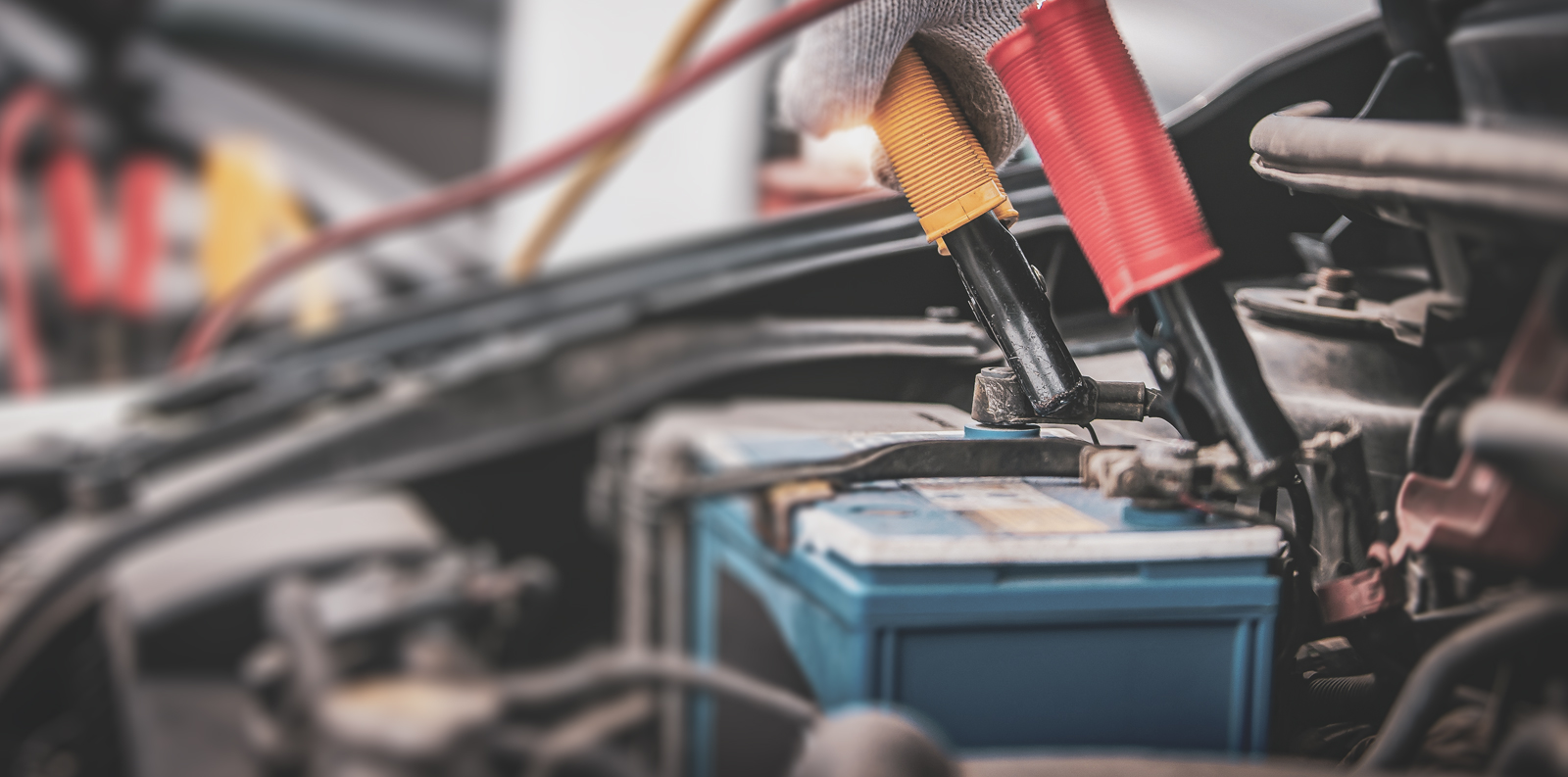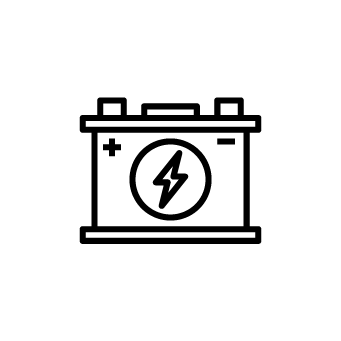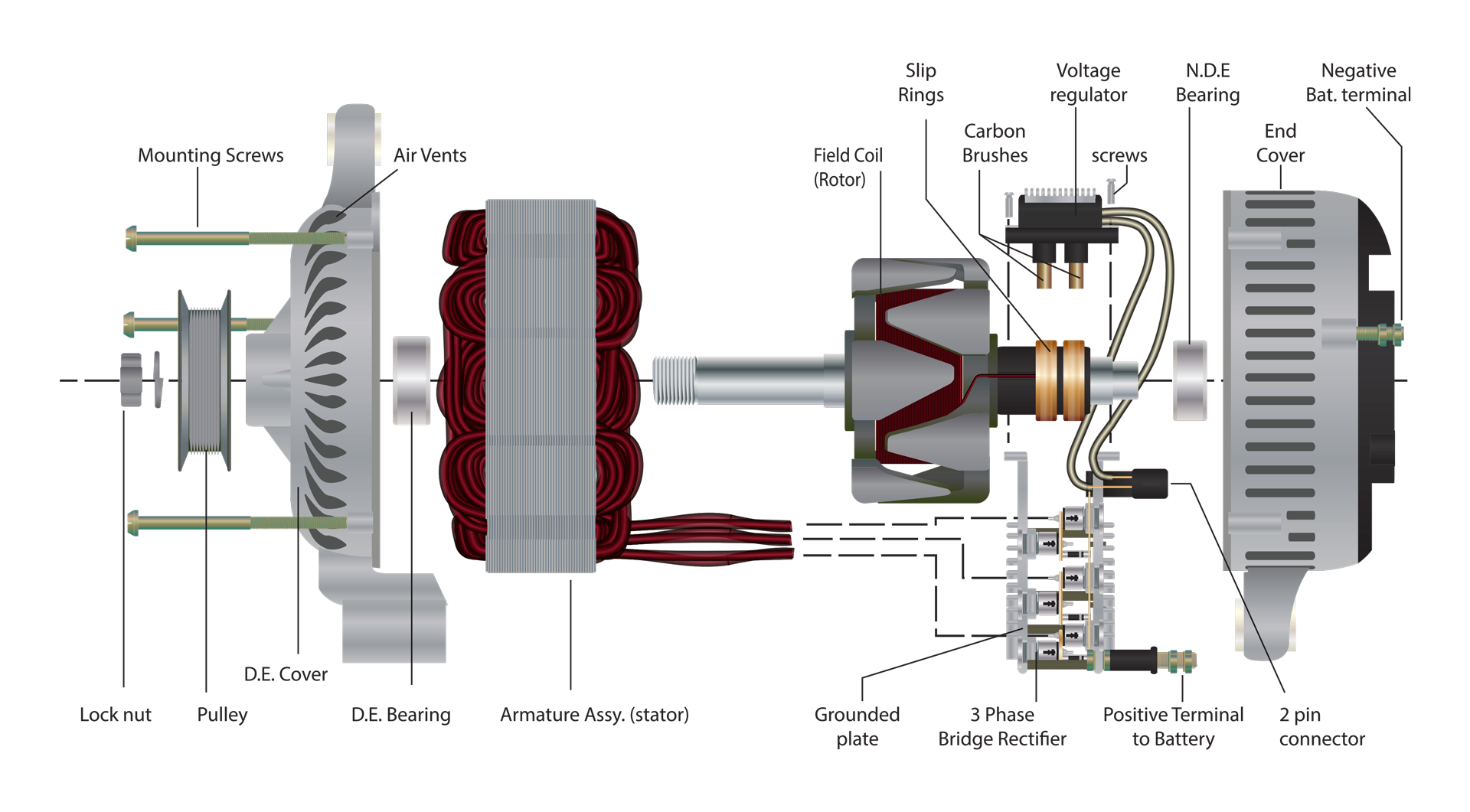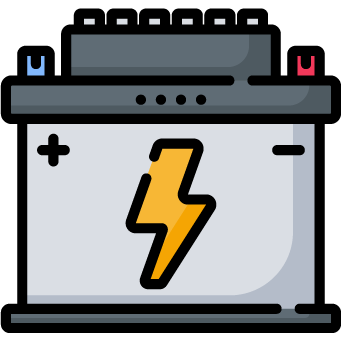Batteries & Alternators
Batteries & Alternators

Batteries & Alternators: What You Need to Know
Your vehicle's battery converts chemical energy into the electrical energy needed to power your vehicle, providing voltage to the starter, while the alternator gives power to most of your vehicle’s electronic components while your vehicle is driving or idling.

Batteries
Vehicle batteries provide the necessary power to your vehicle’s electrical components. The battery converts chemical energy into the electrical energy needed to power your vehicle, providing voltage to the starter. Car batteries on average last between three to five years and are most commonly found under your vehicle’s hood or in the trunk. It’s important to regularly get your battery checked out so any prevailing issues can be found before the problem has a chance to escalate.
Most Common Types of Batteries

Flooded Lead Acid Battery (Wet Cell)
This battery is made up of six cells with a liquid electrolyte solution of sulfuric acid and water that supplies a voltage of 12.6V at full charge.

Gel Cell Battery (Dry Cell)
This battery was developed as a spill-proof version of a flooded battery. The electrolyte solution is turned into gel to increase the life cycle.

Absorbent Glass Mat Battery (AGM)
This battery is designed to support higher electrical energy demands in modern vehicles. It also has the capacity to charge up to five times faster than conventional batteries.

Lithium Ion Battery
These batteries are typically found in hybrid or electric vehicles. They are designed to store more energy and obtain faster charging times. Lithium Ion batteries last between 10 – 20 years.
Warning Signs of a Bad Battery
- Slow engine crank: Your vehicle is struggling to start and making a clicking noise before it starts.
- Check engine light: If your check engine light is on, this can mean a variety of different things, but it can also be related to a dying battery.
- Low battery fluid level: There is a light on your battery that indicates your battery fluid level. A green light is good, a yellow means it’s low, and a dark light means it needs battery fluid or it is discharged.
- Battery looks swollen: An excess amount of heat or cold can cause a chemical reaction within your battery, resulting in your battery case swelling.
- Having to jump your battery multiple times: If you have jumped your battery a couple of times in the past week or month, it’s time to get your battery checked out and tested.

Alternators
An alternator gives power to most of your vehicle’s electronic components while your vehicle is driving or idling. These include headlights, electric steering, windows, windshield wipers, heated seats, dashboard instruments, and the radio. The alternator essentially keeps the battery of your car alive while your car is running.
While your engine is on, there’s a drive belt that rests on a pulley that rotates the alternator’s rotor shaft. This spins magnets around in a coil which creates an alternating current (AC) that gets directed to the alternator’s rectifier. The rectifier then transforms alternating current (AC) power into direct current (DC) power that stimulates the car’s electrical system.
Warning Signs of a Bad Alternator
Typical signs of a bad alternator are often mistaken as problems with the battery. If you are experiencing only one of the issues below, it may not necessarily be your alternator as any of these warning signs indicate a potential issue with your vehicle’s electrical system.
- Dim or overly bright lights: When an alternator starts to go bad, there is an inconsistent voltage with your electronic accessories, which means your headlights can be too dim, too bright, or your headlights may be flickering.
- Slow or malfunctioning accessories: If there are slow processes or malfunctions in your heating seat feature or your windows are rolling up slowly, chances are your alternator is not getting enough power to your battery.
- Trouble starting or frequent stalling: Trouble starting the engine could mean that the alternator is not charging the battery enough to start.
Most Common Types of Alternators

Salient Pole
This alternator holds projecting poles that are mounted over a heavy magnetic wheel of iron or steel. This type of alternator has a large diameter and short axles. These alternators are typically used in lower-speed electrical machines.

Smooth Cylindrical (Non-Salient Pole)
This alternator has a smooth steel cylinder that has slots spaced apart that wrap wires around a magnetic core. These alternators are found in higher-speed and higher-power machines.
Common Causes for an Alternator to Go Bad

Incorrect Use of Jumper Cables
Incorrectly using jumper cables can cause your alternator to stop working.

Fluid Leak
Fluid leaking onto the alternator can ruin the alternator if not caught in time.

Accessory Overuse
Using an accessory that can potentially overload the charging system.

Bad Wiring
Dysfunctional wiring within the alternator will cause the alternator to not work correctly or not work at all.

When To Call A Professional
If your vehicle is struggling to start, you’ve jump-started your vehicle multiple times, or your check engine light has turned on, book an appointment at Rydell in Grand Forks, ND to have our certified technicians diagnose the problem.
Schedule Service with Rydell






